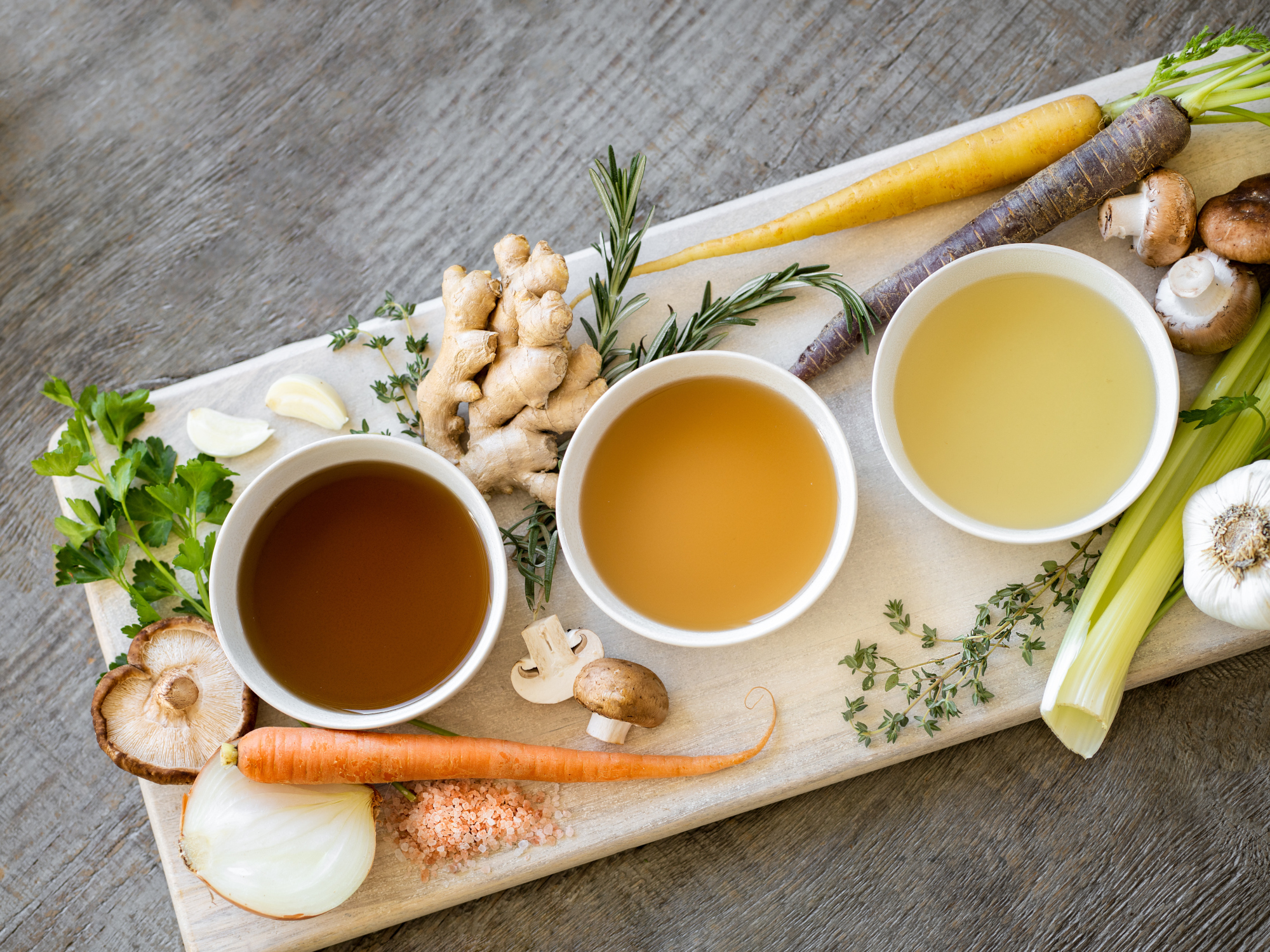Like it or not, food waste is an unavoidable part of cooking – even when making something as convenient as soup, some bits of veggies always end up in the compost bin. However, if you’re resourceful, you can make something delicious out of your leftover vegetables.
The big dilemma
Meal prep looks wasteful at a first glance. The more veggies you chop, the more scraps you’re left with: garlic skins, onion root ends, celery roots and tops, spring onion butts, thyme stems. Even resource-efficient dishes such as soups and stews usually leave some wasted bits ready for the bin.
To add insult to injury, the bottom drawer of your fridge probably holds a couple of carrots that are too limp for a salad or a hearty stew, and you’re starting to feel sad about throwing them away. How can you avoid wasting all of that food?
The easy solution
Thankfully, there’s no need to despair. Those seemingly undesirable bits are packed with flavor and goodness. All you really need is a way to extract them in a convenient, easy manner – preferably something as easy as chucking leftovers in the compost bin.
Here’s what you should do: make your own vegetable stock.
The benefits
Instead of throwing away vegetable peels, trimmings, and scraps, you can use them to create a tasty stock that you can add to stews, soups, risottos, sauces, and any other recipe that needs the extra flavor that you can only get from a proper stock. Here are some recipes that use vegetable stock as an ingredient.
Buying pre-made vegetable stock can be relatively expensive, especially if you use it frequently when cooking. By making your own stock from scraps, you’ll save money by using the bits of veggies that you might otherwise discard – plus you know exactly what’s gone into your stock.
You can also easily adjust the flavor. When you make your own vegetable stock, you have control over the ingredients, so you can adjust it to your preferences by choosing the vegetables that you like best – the resulting stock will complement your dishes perfectly. Try using homemade mushroom stock (made from leftover mushroom stems) the next time you make mushroom risotto.
Then there’s also the health factor. Store-bought vegetable stock usually contains added preservatives, sodium, and artificial flavorings. When you make your own stock, you can be sure that it’s free from synthetic additives and made from real ingredients, ensuring that the flavors are vibrant and the nutrients are preserved. This can significantly enhance the taste and quality of your dishes, compared to using canned or powdered stock.
Making your own stock also reduces the need for single-use packaging such as cans and Tetra Paks. This means less waste and more eco-friendly practices.
How to make vegetable stock
Always wash your veggies before preparing them. Start by saving root ends, peels, herb stems, mushroom bits (especially the often woody stems), onion and garlic skins, and the hard green tips of leeks, and store them in an appropriate ziplock bag in the freezer for later.
Here’s a more comprehensive list of things you should save for stock:
- Onions, shallots, garlic skins and trimmings, scallions, leeks
- Celery, carrot, turnip, ginger
- Tomatoes, mushrooms
- Thyme, parsley (including the stems)
- Fennel, sage and rosemary (in moderation)
- Cilantro, lemongrass (depending on what flavor profile you’re looking for)
After a week or so of cooking at home and saving the scraps, you’ll find that your frozen bag of leftover veggies is now full. Which means that it’s time to make your own homemade stock – which will be way better than anything you can get at the grocery store.
Put all your frozen veggie scraps into a pot of cold water along with a bay leaf or two. Bring to a boil, then simmer for about 10 minutes, and strain using a strainer lined with cheesecloth.
Freeze your home-made stock in an ice cube tray if you’re going to use it later or store it in a jar in the fridge if you’re planning on using it soon.
So, what are you waiting for?
Enjoy experimenting with different veggies when making your own stocks! Save the container with lemongrass and cilantro for Thai dishes, or go all out on ginger and garlic scraps for a velvet roasted beetroot soup. The possibilities are endless!
By preparing your own vegetable stock, you’ll save money and resources, while enhancing the flavor of your home-cooked meals and making them more sustainable. It’s the perfect win-win situation!










